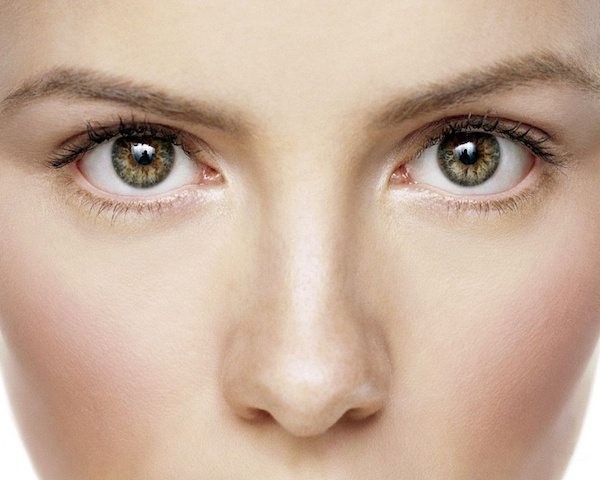Dr. Goldfaden breaks down how skin ages and what we need to look for in protecting our hands, yes HANDS, from premature aging.
UNDERSTANDING HOW SKIN AGES
As we age, our skin cells become less and less capable of producing the energy needed for DNA repair and cell renewal. Our bodies’ natural supply of internal antioxidants such as superoxide dismutase (SOD) and catalase also diminishes. This allows free radicals generated by ultraviolet light, smog, cigarette smoke, X-rays, drugs, and other factors to inflict cumulative damage to the lipid bilayer that covers our skin cells. This constant oxidative assault also causes the fatty membranes of cells to become more permeable, with the result that our skin gradually loses moisture and becomes dehydrated.
Aging likewise involves a progressive decline in the body’s ability to synthesize essential fatty acids required by the skin to maintain adequate moisture. Collagen, the primary protein in the skin’s connective tissue, is especially susceptible to free-radical damage, and this accounts for the sagginess and wrinkles so often seen in aged skin.
Age spots, another common skin feature associated with aging, are caused by specialized skin cells known as melanocytes, which make up about 8-10% of the epidermal skin cells. Melanocytes continually release small amounts of brown-black pigment called melanin, which determines normal skin color and also helps protect the skin by limiting the penetration of ultraviolet light into the epidermis and by scavenging DNA-damaging free radicals. As skin ages, these melanocytes grow fewer in number and often cluster together, appearing as brown, or even black, patches on your skin.
ANTIOXIDANTS REPAIR AND REJUVENATE SKIN
Although the aging process and its adverse effects on your skin may seem both relentless and inevitable, a number of natural compounds have been scientifically shown to support the repair mechanisms of skin cells and boost their healing capabilities.
One group of compounds that effectively counteract the damaging effects of free radicals are antioxidants. Topically applied antioxidants confer significant protection against free-radical assault and even partially reverse some aspects of skin aging. Several noted animal and human studies have demonstrated that antioxidants of low molecular weight, such as vitamin E and alpha-lipoic acid, exert strong protective effects against free-radical damage.
Due to its ability to induce superoxide dismutase (SOD) activity, red tea extract exerts antioxidant effects that are approximately 50 times greater than those of green tea. Red tea extract contains potent, protective natural antioxidants and enzymes, such as vitamins C and E and beta-carotene, which facilitate skin cell renewal, giving skin a smoother, brighter, and healthier appearance.
MOISTURIZERS SOFTEN DRY, ROUGH SKIN
Another critical group of nutrients required for healthy skin are natural moisturizing agents that protect against dehydration. One of the most important of these is hyaluronic acid, a large sugar-like molecule found in every tissue of the body, particularly in collagen-rich connective tissues.
The network of collagen fibers below the skin is filled with a jelly-like mixture of water, protein complexes, and hyaluronic acid, which facilitates the transport of essential nutrients from the bloodstream to the living cells of the skin. Hyaluronic acid is critical to this mixture because of its ability to attract and bind with water. Unfortunately, due to damaging free radicals, up to half of our hyaluronic acid reserves are depleted by the time we turn 50. Replenishing the skin with hyaluronic acid promotes healing, repair, and antioxidant activity. Hyaluronic acid also provides volume and fullness, and is crucial in maintaining smoothness and moisture in the skin.
COMPOUNDS TO REJUVENATE OLD SKIN CELLS
The fat-soluble antioxidant CoQ10 is highly effective in countering the normal decline in mitochondrial energy production that accompanies aging.8 Coenzyme Q10 is especially important for aging skin due to its essential role in assisting fibroblast cells.
Another nutrient that fights sagging caused by the destruction of the skin’s underlying collagen structure is DMAE (dimethylaminoethanol). In one study, DMAE was shown to produce a firming effect on the skin, perhaps because DMAE helps to stabilize cell membranes. Based on clinical reports, DMAE may be the first topical agent that can help firm sagging skin directly. DMAE also greatly increases the skin’s radiance, tone, and firmness, while decreasing micro-inflammation.
Retinol, a pure and active form of vitamin A, is one of the few substances with a molecular structure small enough to penetrate to the skin’s lower layers, where collagen and elastin reside. By stimulating collagen and elastin, vitamin A derivatives create firmer, smoother skin and also work to increase cell turnover by stimulating the production of new cells underneath the skin’s surface. This accelerated cell turnover promotes the exfoliation of dead skin cells and allows healthier cells to appear. As a result, the skin appears softer and smoother, and signs of aging start to diminish.
LIGHTENING AGENTS IMPROVE SKIN TONE AND COLOR
The final group of compounds that can improve the health and appearance of aged skin are skin-lightening agents. These compounds help reduce unsightly, mottled areas of hyperpigmentation where melanin has pooled underneath the skin. Two ingredients that appear to work synergistically to address this condition are N-acetyl glucosamine and niacinamide.
Glucosamine’s anti-inflammatory and antioxidant effects in promoting joint health are well established. When combined with niacinamide, a vitamin B derivative, N-acetyl glucosamine is more effective in reducing hyperpigmentation than niacinamide or N-acetyl glucosamine alone. Treatment with N-acetyl glucosamine and niacinamide reduced both the size of hyperpigmented spots and improved the consistency of melanin distribution in the skin. In-vitro studies of human skin cultures also found that N-acetyl glucosamine and niacinamide stimulated the production of hyaluronic acid and increased healthy collagen expression. This improved hydration of the skin helps reduce the appearance of fine lines and wrinkles.
Being among the top concern of patients in Dr. Goldfaden’s office and around the world, Dr. Goldfaden has specially developed Hands To Heart “Anti-Aging + Brightening” hand treatment to address the unique needs of the hands, this rich, yet fast-absorbing cream helps fade dark spots and reduces the appearance of fine lines while instantly smoothing and plumping skin. Breakthrough anti-aging ingredients CoQ10, niacinimide, glucosamine and retinol along with potent hyaluronic acid work to provide skin with a more youthful appearance leaving hands nourished, protected and supple.




